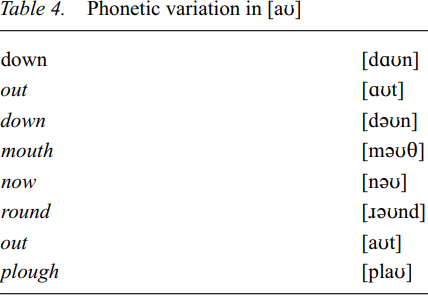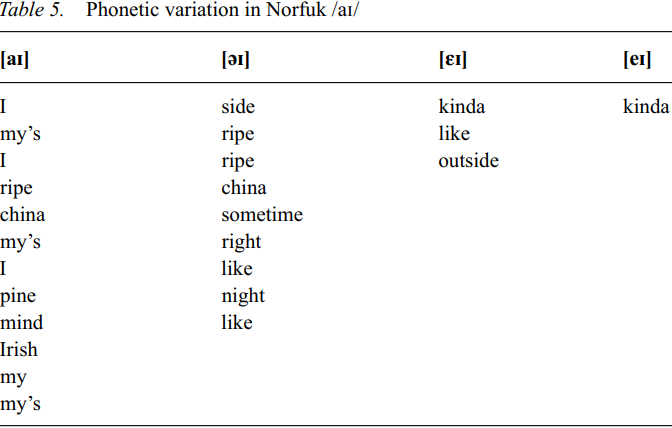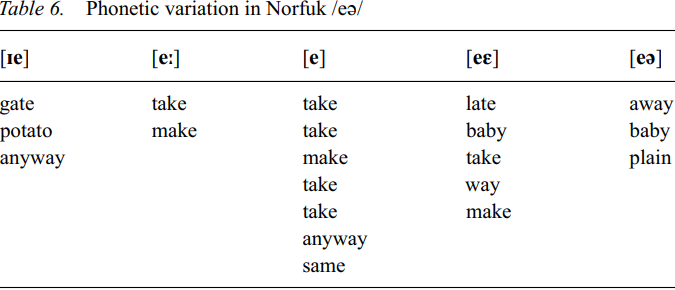


 Grammar
Grammar
 Tenses
Tenses
 Present
Present
 Past
Past
 Future
Future
 Parts Of Speech
Parts Of Speech
 Nouns
Nouns
 Verbs
Verbs
 Adverbs
Adverbs
 Adjectives
Adjectives
 Pronouns
Pronouns
 Pre Position
Pre Position
 Preposition by function
Preposition by function 
 Preposition by construction
Preposition by construction
 Conjunctions
Conjunctions
 Interjections
Interjections
 Grammar Rules
Grammar Rules
 Linguistics
Linguistics
 Semantics
Semantics
 Pragmatics
Pragmatics
 Reading Comprehension
Reading Comprehension|
Read More
Date: 2024-05-13
Date: 2024-03-06
Date: 2024-06-01
|
Norfuk /oʊ/ (home) has its vowel nucleus close to [ɔ], somewhat fronted, and usually with a perceptible schwa off-glide. The obvious outlier in this series (all from our male speaker) is the form y’know, which seems to be a borrowing from Australian or standard Norfolk English.

With the exception of the outlier (y’know), the formant trajectories for the off-glide in the diphthongs have a forward movement. This diphthong is quite a distinctive marker of Norfuk accent. However, it does not appear to be phonologically contrastive with Norfuk [ɔ:].
Norfuk [aʊ] (down, now, mouth) showed a good deal of phonetic variability. In general, it shows evidence of incomplete lowering of the nucleus, as in other conservative regional dialects (Scots English, Canadian English, etc.). The range of phonetic variation for [aʊ] can be illustrated with the following tokens from our male speaker:

To quantify this variation, we took formant measurements of the nucleus. The degree of lowering of the nucleus in the F1-F2 space corresponded with impressionistic transcription. Clearly, the word plough seems to be a borrowing from Australian English.
Norfuk [ɑɪ] evinces incomplete lowering of the nucleus, as also found in conservative regional English dialects. The environment for this incomplete lowering (often referred to as ‘Canadian Raising’ for its prevalence in Eastern Canadian English) is before voiceless obstruents in closed syllables. Our impressionistic transcriptions of [ɑɪ] tokens in stressed syllables showed some evidence of this rule in Norfuk.

Norfuk [eə] (which corresponds to Australian or Standard Norfolk English [eɪ]) is either a monophthong or an opening diphthong which is highly recognizable (as it is in Irish English). The range of variation illustrated in Table 6 is quite large, as the following tokens suggest. There was no obvious phonological conditioning for this variation.

|
|
|
|
للعاملين في الليل.. حيلة صحية تجنبكم خطر هذا النوع من العمل
|
|
|
|
|
|
|
"ناسا" تحتفي برائد الفضاء السوفياتي يوري غاغارين
|
|
|
|
|
|
|
نحو شراكة وطنية متكاملة.. الأمين العام للعتبة الحسينية يبحث مع وكيل وزارة الخارجية آفاق التعاون المؤسسي
|
|
|